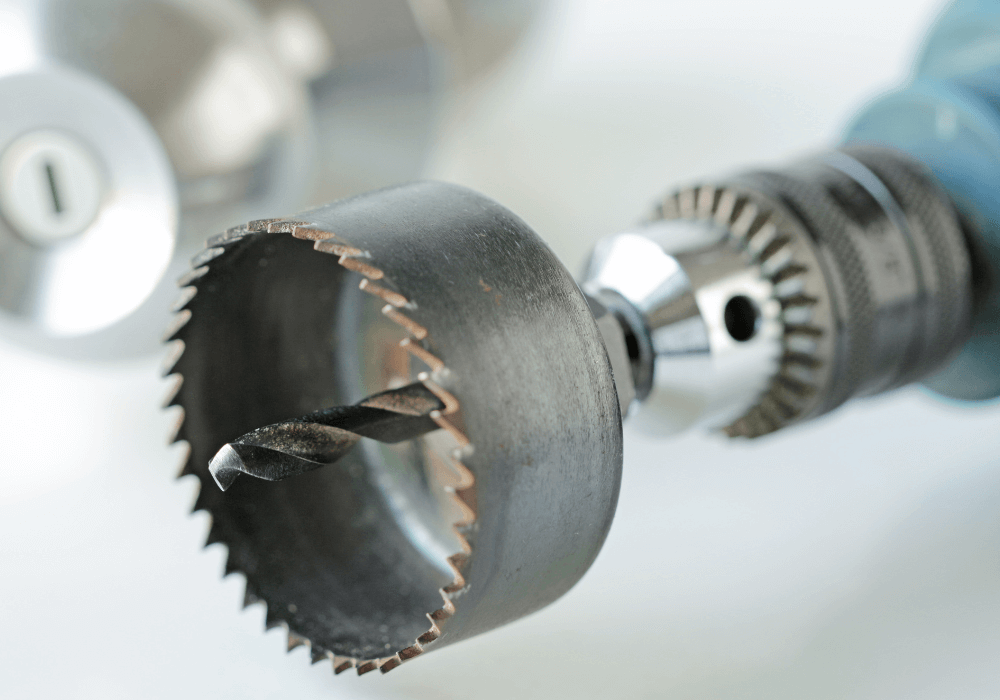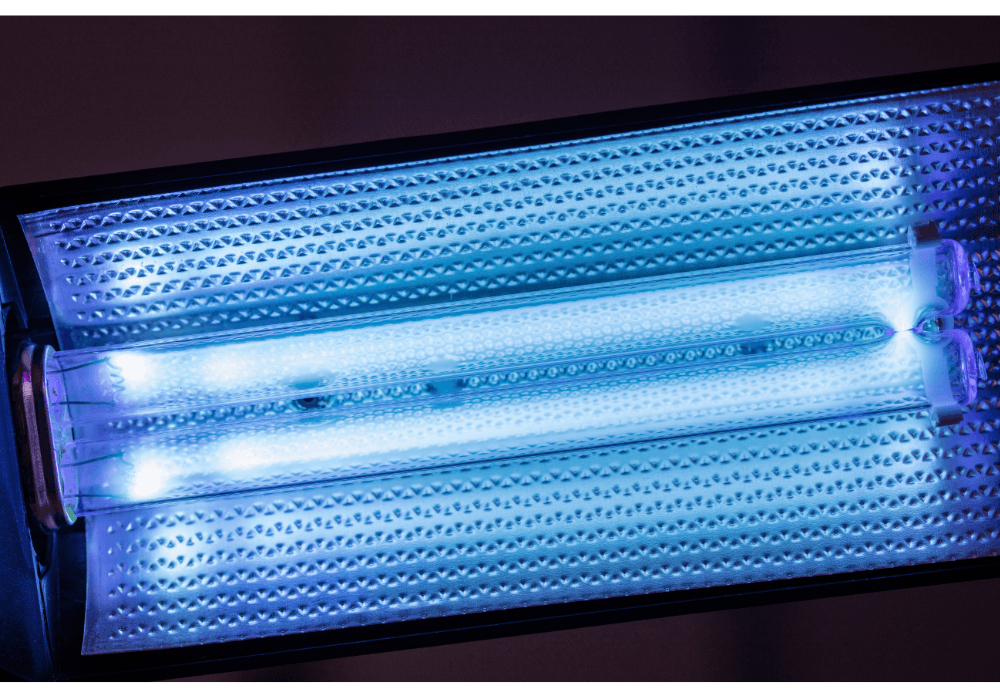How to Install a UV Light in HVAC
By My Service Depot on Thursday, July 28, 2022UV Lights Help to Kill Mold and Bacteria, Keeping the Air Clean and Fresh. Understand UV Light and How to Implement One Into Your HVAC System.
What is a UV Light
An HVAC UV light is a germicidal lamp that kills or inactivates microorganisms by destroying their DNA or RNA. Ultraviolet light is used in HVAC (heating, ventilation, and air conditioning) systems to improve the quality of the air inside homes and commercial buildings. They can also be used to disinfect surfaces and objects.
The main types of HVAC UV lights are low-pressure mercury-vapor lamps, medium-pressure mercury-vapor lamps, and high-pressure mercury-vapor lamps.
- Low-pressure mercury vapor lamps are the most common type of UV light. Low-pressure mercury vapor lamps produce a large amount of shortwave ultraviolet light (UV-C).
- Medium-pressure mercury vapor lamps produce a smaller amount of shortwave ultraviolet light (UV-C).
- High-pressure mercury vapor lamps produce a very small amount of shortwave ultraviolet light (UV-C). The amount of UV light produced by an HVAC UV lamp is measured in watts per wavelength range in nanometers (nm).
Why You Should Never Allow a UV Light to Shine on Your Eyes or Skin

Most people are aware of the dangers of ultraviolet (UV) radiation from the sun, but many don’t realize that UV light can be just as harmful when it comes from other sources.
One common source of UV radiation is HVAC systems. When HVAC systems are not properly serviced, the UV lights used to kill bacteria can leak out and shine directly on occupants. This can cause skin damage and potentially increase the risk of cancer.
It’s important to never allow UV light to shine on your eyes or skin. Exposure to UV light can cause several problems, including cataracts, macular degeneration, and pinguecula. In some cases, HVAC systems that are not properly serviced can also emit dangerous levels of ozone, another known health hazard.
For these reasons, it’s important to make sure that your HVAC system is regularly serviced by a qualified technician. This will help to ensure that your system is operating safely and effectively and that you and your family are not being exposed to any unnecessary health risks.
How to Determine the Best Location to Place the UV Light
HVAC systems are important for maintaining a comfortable indoor environment. However, HVAC systems can also be a source of harmful UV radiation. To protect your family from the risks of UV radiation, it is important to determine the best location to place the UV light in your HVAC system.
The best location for the UV light will depend on the type of HVAC system you have and the layout of your home. For example, if you have a central HVAC system, the best location for the UV light may be near the air intake. If you have a window-mounted HVAC system, the best location for the UV light may be near the windows. Generally, it should be placed near the evaporator coil so that it can effectively sterilize the air as it passes through the HVAC system.
Determine the Type of Evaporator Coil
It may be best to determine what kind of coil your HVAC system has. There are two main types, an A-Shaped Evaporator Coil and an N-Shaped Evaporator Coil.
In an A-Shaped coil, it is a good rule of thumb to install the UV light above, center, and downstream of the coil. The next best option would be to install the UV light below the coil, but in some cases there may not be enough room. If neither of those options work, then installing the UV light to either side of the coil would work just fine.
For an HVAC unit with an N-Shaped coil, you can either install the UV light above or below it. The closer the UV light is installed to the drip pan the better as that is where the most moisture will be.
According to Home Inspector Secrets and Lincoln Tech, the evaporator coil is usually the source of HVAC contaminants. It is susceptible to the growth of biofilms which are communities of microorganisms that stick together on the surface.
Once you have determined the best location for the UV light, you can take the next step and begin installing the UV light, or contact a professional HVAC company to have the light installed.
Take Measurements Before Drilling Holes
It is a good idea to first remove the furnace cover to take measurements. This will help you avoid cutting a hole in the sheet metal only to find that the UV light won’t fit in that location.
Get a feel for what location might work best for the size of UV bulb and type of HVAC unit that you have.
While doing this avoid touching the bulb, as the oils from your skin could possibly damage the bulb or reduce its effectiveness.
Most HVAC UV light products also come with a handy paper template that can make the mounting process much easier. For assistance in cutting the holes at a proper distance from one another, simply tape the template to the area that you wish to install the UV light.
Shut Off Power
Before grabbing your hole saw and drilling, be sure to turn off the power to the HVAC system by locating your homes breaker and flipping the switch.
How to Use a Hole Saw to Cut Into the Metal Duct (And My Top Hole Saw Choice)

HVAC systems are a common sight in many homes and businesses, but they can be difficult to service. One of the most challenging tasks is cutting into the metal ductwork. This is where a hole saw comes in handy.
A hole saw is a circular saw with teeth that are designed for cutting through metal. It can quickly cut through the ductwork, making it easy to access the HVAC system for service.
The best hole saw for HVAC work is one that has been designed specifically for HVAC applications. These saws typically have carbide teeth that can handle the tough metal ductwork. Some even come with a UV light themselves that helps to identify HVAC issues.
If I were to recommend a hole saw, I would recommend the Milwaukee hole saw kit. This is a cheap option that includes a variety of sizes of hole saws to satisfy all the hole cutting needs. It also includes a handy case to keep all the saws organized.
If you still aren’t sure how to use a hole saw, take a look at this handy YouTube video How to Use a Hole Saw provided by This Old House for a more in-depth look.
The Best Way to Power a Germicidal UV Light Unit
HVAC systems are used in both residential and commercial settings to control the indoor temperature and air quality. In many cases, these systems also include germicidal UV light units, which help to kill harmful bacteria and viruses. However, powering these units can be a challenge.
Most UV lights come with an extension cord (5′-7′ in length) that can be used to power the device. This is a great option for many because most utility rooms are already equipped with an outlet, so running the cable is fairly straight forward.
If you are someone who already has enough cords and cables hanging out of the sockets in your home, the best option for you would be to hardwire the UV light into the furnace. It can even be wired so that the UV light on turns on when the HVAC unit is running, that way it isn’t on all day, everyday. With utility bills as high as they are these days, we could all benefit from any extra efficiency in our homes!
Important Things to Do Before Installing a UV Light
UV lights help to kill mold and bacteria, keeping the air clean and fresh. However, before you install a UV light, it is important to identify any potential mold growth in your HVAC system. This can be done by scheduling a professional HVAC inspection.
A trained technician will be able to identify any mold growth and recommend the best course of action. This will ensure that everything is clean and in good working order before the UV light is installed. In some cases, they may even be able to install the UV light for you.
Either way, by taking the time to identify mold before installing a UV light, you can help ensure that your HVAC system stays clean and efficient for years to come.
When Should You Replace the UV Light in Your HVAC System?
Ultraviolet (UV) light is a type of electromagnetic radiation that is invisible to the human eye. This form of energy is found naturally in sunlight, and it can also be produced artificially using special lamps. In recent years, UV light has been used in a variety of applications, including water purification, air purification, and food sterilization.
When it comes to your home’s HVAC system, UV light can be used to kill harmful bacteria and viruses that can cause respiratory illness. UV light bulbs should be replaced every 12 months or sooner if they stop working properly. You may need to replace the UV light more frequently if your HVAC system is used frequently or if you have a pet or someone in your home with allergies.
Replacing the UV light is a simple process that does not require professional assistance. However, you should always consult your HVAC manual for specific instructions on how to safely replace the UV light bulb in your system. By regularly replacing the UV light in your HVAC system, you can help to ensure that your family stays healthy and free from illness.
Does UV Light Kill Mold?
HVAC service providers are often asked whether UV light can kill mold. The answer is yes – UV light can kill mold and help to prevent it from coming back. UV light works by damaging the DNA of mold spores, making it difficult for them to reproduce. In addition, UV light kills mold by destroying the cell walls of the mold spores.
As a result, UV light is an effective way to control mold growth in your home or office. If you’re concerned about mold growth in your HVAC system, consider investing in a UV light purification system. This will help to keep your air quality high and prevent mold growth.
What Are the Best UV Light Options for HVAC?
If you’re looking for a UV light to purify the air in your home or office, there are a few things to keep in mind.
First, you’ll need to decide whether you want a portable unit or a whole-house system. Portable units are less expensive and can be moved from room to room as needed. Whole-house systems are more expensive but will purify the air in your entire home or office.
Second, you’ll need to choose between an ultraviolet germicidal irradiation (UVGI) system and a photocatalytic oxidation (PCO) system. UVGI systems use ultraviolet light to kill mold and bacteria. PCO systems use ultraviolet light to catalyze chemical reactions that break down mold and bacteria.
Third, you’ll need to decide what type of UV light bulbs you want. There are three types of UV light bulbs: low-pressure, medium-pressure, and high-pressure. Low-pressure bulbs are less expensive but have a shorter lifespan. High-pressure bulbs are more expensive but last longer.
When choosing UV light bulbs, it’s important to consider both the cost and the lifespan of the bulbs. By doing so, you can find the best option for your needs.
If you’re looking for a more in-depth look at what brand of UV light to buy, BestReviews.Guide provides a top 10 list of the best UV lights for HVAC. It also includes links to websites where you can purchase all of the items and get a more extensive reviews on each product. This will ensure you are getting the best product for your needs.
Benefits of Using UV Light
The use of a UV light in your HVAC system can provide numerous benefits, some of which include:
- Used to clean HVAC filters, improving the efficiency of the system and providing other benefits.
- Natural disinfectant that can help to kill bacteria and viruses.
- Helps to break down organic matter, such as pollen and mold spores.
- Improves the quality of your indoor air by reducing the number of allergens and other airborne contaminants.
- Helps to prolong the life of your HVAC system.
Conclusion
While it is important to be aware of the dangers of UV light, that doesn’t mean you should avoid using them altogether. With proper precautions in place, ultraviolet lights can be a powerful tool for disinfection and mold prevention. UV light is an important part of your HVAC system and can play a big role in keeping you and your family healthy. Not only does it kill germs, but it also helps to reduce the growth of mold.
Have you ever considered using UV light in your home? If not, we hope this article has convinced you of its importance! If you are an HVAC professional looking for more tips, check out the Smart Service Blog. If you run your own HVAC company and are looking for ways to streamline your business, then you should check out the HVAC software provided by Smart Service. It can help you stay competitive in a very fast growing industry. You can request a free demo and get started today!


